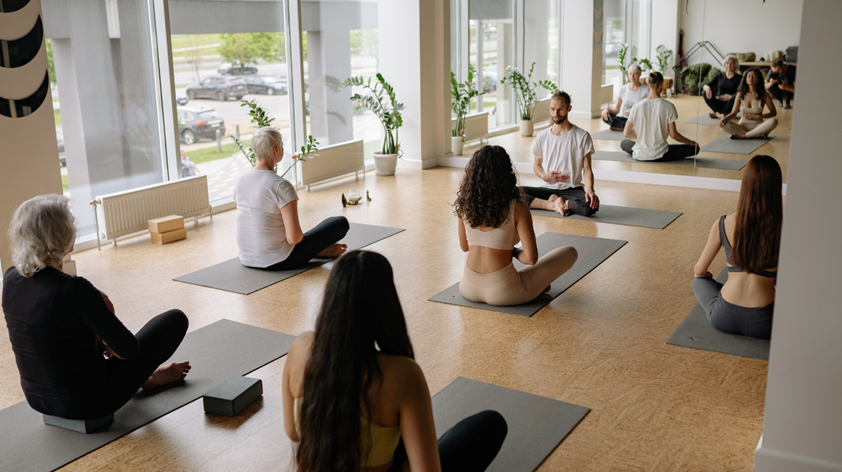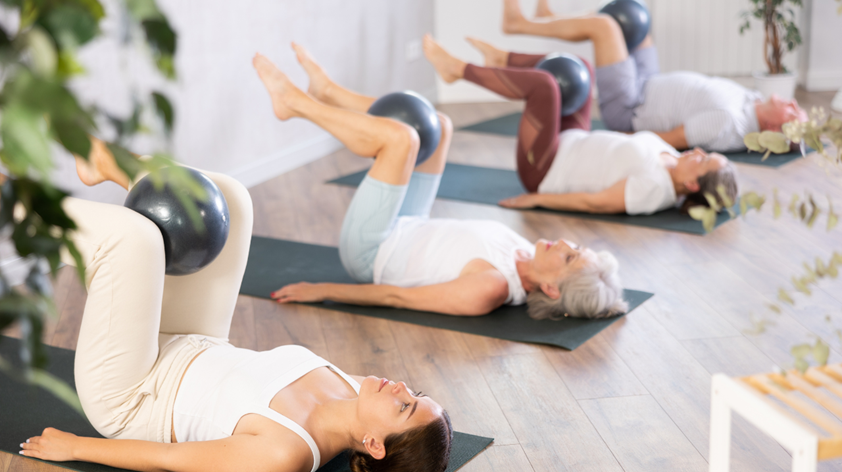An Active Lifestyle for Healthy Joints
- Home
- Services
- Orthopaedics
- Knowledge Hub
- An Active Lifestyle for Healthy Joints
Joint pain doesn't discriminate — it can affect anyone from office workers to athletes, making daily life feel like a challenge.
Whether you're dealing with chronic pain, stiffness or discomfort, joint pain can reduce your quality of life. With advice from Sydney Orthopaedic Surgeon Associate Professor Dr Justin Roe, this article explains the causes of joint pain and shares how to maintain joint health through active living.
Common causes of joint pain

Understanding the cause of your pain can influence the remedy. Here are some of the main causes of joint pain:
Not being active
Regular movement can have widespread positive effects on your body.
Dr Roe explains: "When movement is limited, we see a cascade of changes in the joint environment that can accelerate cartilage deterioration and increase inflammation."
Prolonged sitting or laying down, or improper positioning, can affect joints by:
- Reducing joint lubrication, leading to friction.
- Weakening stabilising muscles.
- Decreasing blood flow to joint tissues.
- Sustaining joint compression.
Overuse or Microtrauma
Excessive or improper joint use can be just as problematic as inactivity. Gym-goers, manual workers and regularly active people can experience joint problems from overuse. Activities involving repetitive movements or sudden increases in exercise intensity can lead to joint stress.
"The balance between activity and recovery is crucial," says Dr Roe. "Joint tissues need time to adapt to increased demands, and exceeding this capacity leads to inflammation."
Injury or Macrotrauma
When a joint sustains an injury there is potentially irreparable damage to the articular cartilage (joint lining), subchondral bone (bony support of the joint), and supporting ligaments of the joint. Over time, this may then result in excessive wear from normal stress of day-to-day life leading to symptoms of joint pain and inflammation.
“If joint injury has occurred in the past from the sporting field, workplace, road trauma or any other accident, it is best to understand that this may have effects on joint function down the track”, Dr Roe says.
Preexisting medical conditions
Several health conditions can affect joint function and comfort:
- Arthritis: Both osteoarthritis and autoimmune arthritis can cause joint pain and stiffness.
- Fibromyalgia: Fibromyalgia causes widespread muscle and joint pain that often comes with fatigue and sleep disturbances.
- Gout: A form of inflammatory arthritis that usually affects the big toe joint but can also impact other joints.
- Lupus: This autoimmune disease can cause joint pain and inflammation throughout the body.
Dehydration
It’s sometimes overlooked, but proper hydration plays a part in joint health.
Maintaining good hydration helps ensure proper joint lubrication and supports overall joint function.
Poor ergonomics
Ergonomics is a big part of joint health. It’s not uncommon for people to report joint pain as a result of their job. Many workers spend hours in positions that strain their spine, shoulders and wrists. This sustained pressure can lead to muscle imbalances and joint stress over time.
Dr Roe says, “If you feel that you are prone to joint stiffness as a result of your work, then you should take active measures to ensure that you stretch regularly, maintain joint motion and your work-setting is ergonomically suited to you and your build”.
Body weight
Extra weight significantly impacts joint health, particularly in weight-bearing joints like knees and hips. Beyond the mechanical stress, excess weight can trigger inflammatory responses throughout the body that can affect all joints, not just those bearing weight.
“It is well-known that the reduction in weight has a direct relationship to improved joint health and the reduction in the risk of osteoarthritis in knees”, says Dr Roe.
The importance of staying active for joint pain
Regular movement and muscle-building are essential for maintaining healthy joints and managing pain.
"Skeletal muscle, or voluntary muscle, is our largest endocrine organ, working to regulate inflammation throughout the body,” Dr Roe says.
“Regular activity builds muscle and optimises these processes, directly benefiting joint health."
Staying active also helps build stabilising muscles around your joints. Muscles are natural shock absorbers, so you’ll be able to go about your activities without as much strain on your joints.
Finally, exercise also helps promote better overall health, helping you sleep and maintain energy and a healthy weight. This then has flow-on positive effects on your joints.
8 low-impact exercises for joint pain
If you’re experiencing joint pain, it’s important to find exercises where the reward outweighs the risk. Here are eight exercise options to keep you healthy and mobile safely:
Swimming
The water is an ideal environment for joint-friendly exercise. It supports your body weight while allowing free movement.
"What makes swimming particularly effective is its impact on joint mobility, and the reduction of joint loading with the elimination of gravity," explains Dr Roe.
Regular swimming can also improve flexibility, build strength and enhance cardiovascular fitness without stressing your joints.

Walking
Not everyone has access to a pool, but most can walk. Walking is one of the most accessible and beneficial exercises for joint health — it can be done almost anywhere and naturally strengthens the muscles supporting your major joints.
If you have hip joint pain when walking, start with shorter walks on flat, even surfaces and gradually increase your distance as your strength builds. “The use of a walking-stick or pole has been shown to reduce joint loading and decrease pain when walking.” says Dr Roe. “The use of walking poles are also becoming very trendy!”
Cycling
Cycling, whether on an exercise bike or outdoors, is a great exercise for joint pain. The pedalling motion helps lubricate knee joints and strengthen the surrounding muscles.
“Any movement in which there is little weight bearing will be better for your joints than high-impact exercises like running,” Dr Roe says.
If you’re new to the exercise, start out with indoor cycling, where you’ll have better control over resistance and your environment. Make sure that the bike is set-up properly, so you don’t put any excess pressure on other joints like your back.
Yoga
Yoga, when practised appropriately, can significantly improve joint flexibility and stability. Joint pain and arthritis-friendly yoga can strengthen the muscles around joints while improving your range of motion.
However, Dr Roe cautions that yoga practised with the wrong form can lead to joint pain or injury.
"The key with yoga is finding the right style and intensity for your condition and not starting without an instructor to correct your form," he says.
Look for classes specifically designed for joint conditions, or work with an instructor who can modify poses to suit your needs.

Water aerobics
Water aerobics offers many of the same benefits as swimming but with more variety and social interaction. In other words, if you find laps too strenuous or boring, it’s a great alternative.
The water's resistance helps build muscle strength while its buoyancy protects your joints. Classes often incorporate equipment like pool noodles and water weights to add a bit of fun and a challenge.

Light strength training
Stronger muscles lead to stronger joints, and proper strength training is a straightforward way to get there.
There are some risks associated with improper form, so Dr Roe advises you not to start without the green light from your GP or physiotherapist.
“Don’t push too hard — focus on exercises that target major muscle groups while respecting any joint limitations you may have,” he said.
"The key is starting light with proper form under supervision. Over time you can gradually increase weight and intensity. Just starting with body-weight exercises and resistance-bands is all that is needed.”
Tai Chi
Tai Chi is a Chinese martial art that combines gentle flowing movements with mindfulness and paced breathing. It’s low impact, making it particularly good for joint health.
The slow, controlled movements help improve flexibility and strength while promoting good posture. Over time, Tai Chi can reduce joint pain and stiffness while improving overall function.
Pilates
Home, studio and reformer pilates are great exercises for strengthening your core, improving flexibility and getting in proper alignment. Most Pilates routes can be modified to suit different fitness levels and physical limitations such as joint stiffness.
If you’re taking a class, discuss your symptoms with your teacher — they’ll recommend alternative positions to reduce pain.

Other tips to protect your joints
Beyond regular exercise, there are some lifestyle changes you can make to maintain joint health and prevent discomfort. Try these in conjunction with exercises for the best results:
Don’t ignore your pain
Regular check-ups and early intervention can help prevent joint problems from worsening. Pay attention to changes in joint function or persistent discomfort. Don't ignore symptoms hoping they'll go away — early treatment often leads to better outcomes.
Be mindful of your movements
The way we move throughout the day significantly impacts our joints. Start by correcting your posture. If you work at a desk, ensure your computer screen is at eye level, and your keyboard allows your wrists to remain neutral.
When lifting objects, use your legs rather than your back, keeping items close to your body. Simple adjustments to daily activities can make a big difference to joint health.
Stay healthy and hydrated
Overall health is a key component of joint health. As mentioned, dehydration can affect the concentration and function of synovial fluid, which is necessary for joint lubrication. Drink water regularly throughout the day, not just when you feel thirsty.
Superfoods are also great for your joints — fresh fruits and vegetables, omega-3 fatty acids and lean proteins are good choices.
Get enough rest
Rest is just as important as movement. Listen to your body and adjust your activity levels accordingly — take a break from any activity causing you more pain.
Good quality sleep can also reduce pain in people with musculoskeletal conditions affecting the joints. Make sure you’re getting seven or eight hours of sleep a night and that you sleep on a supportive mattress.
Take control of your joint health
Regular movement and proper joint care can help you maintain mobility and reduce pain, making it easier to stay active and live your life. However, if you're experiencing persistent joint pain that impacts your day-to-day, you may need a personalised treatment plan.
Don't let joint pain limit you. Contact St Vincent's orthopaedic services today to learn more about managing your joint health and explore treatment options that suit your lifestyle and needs.
